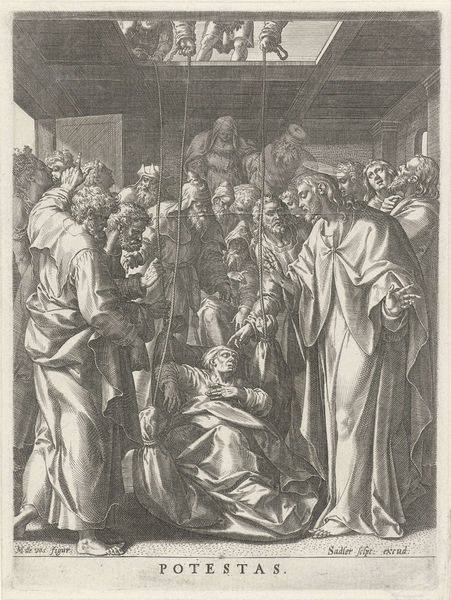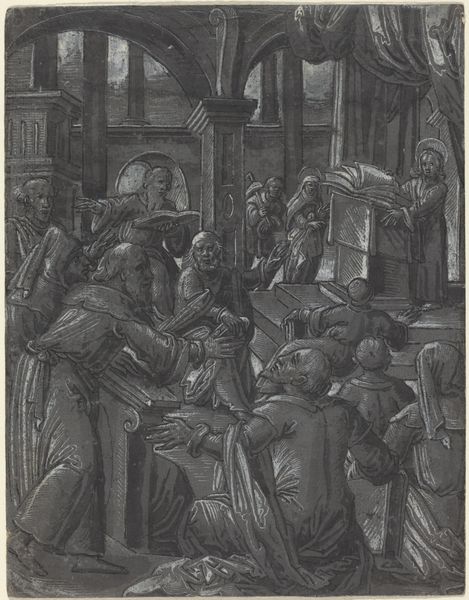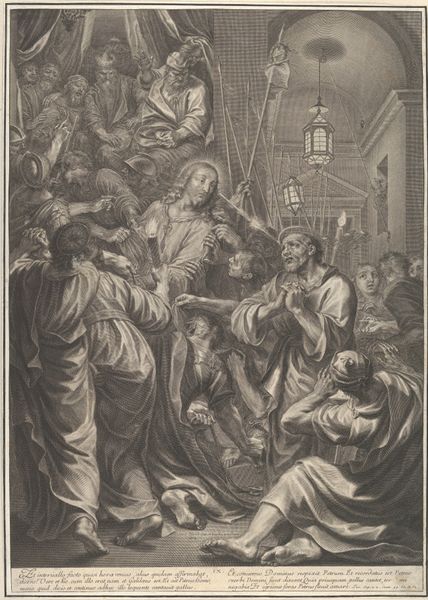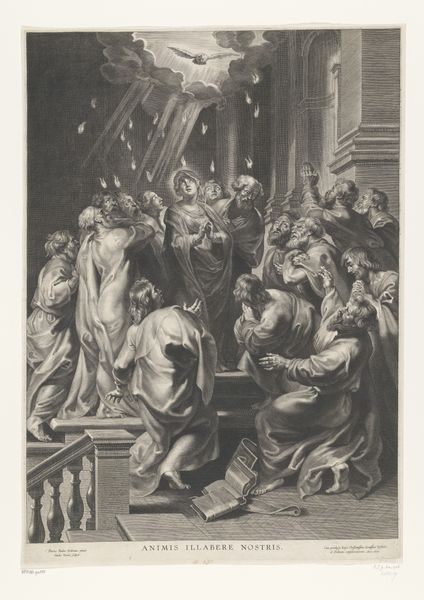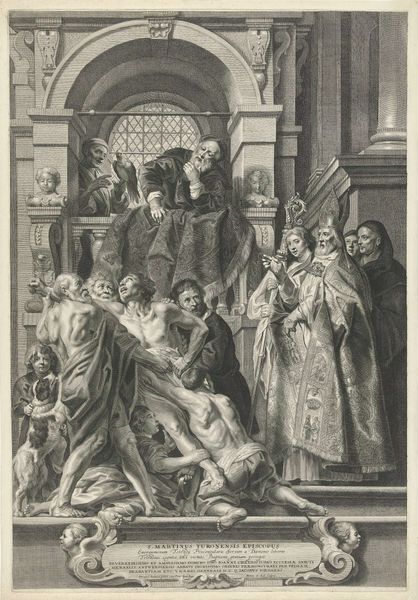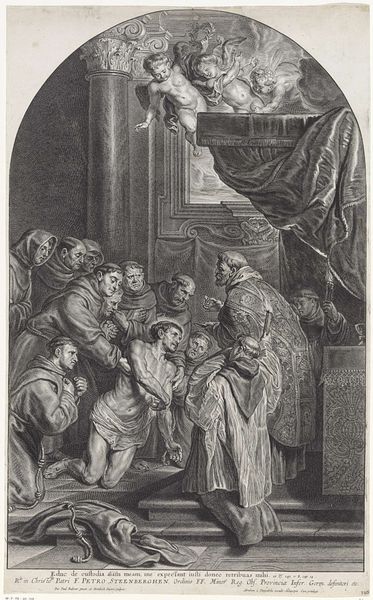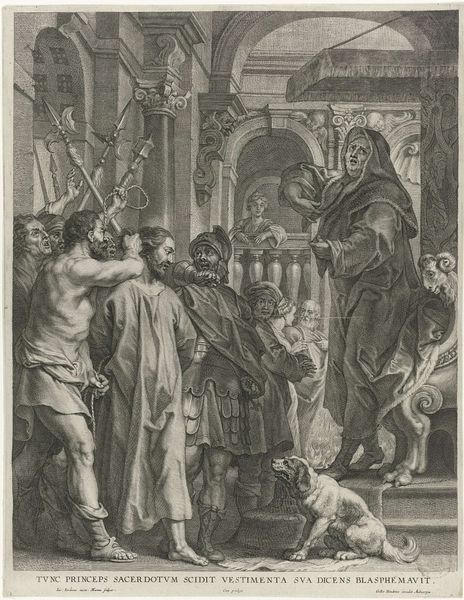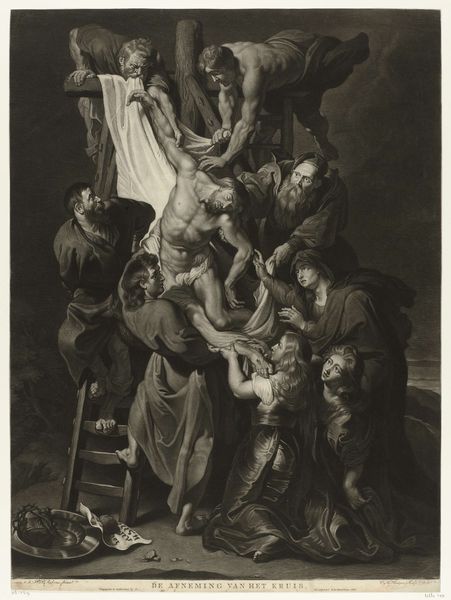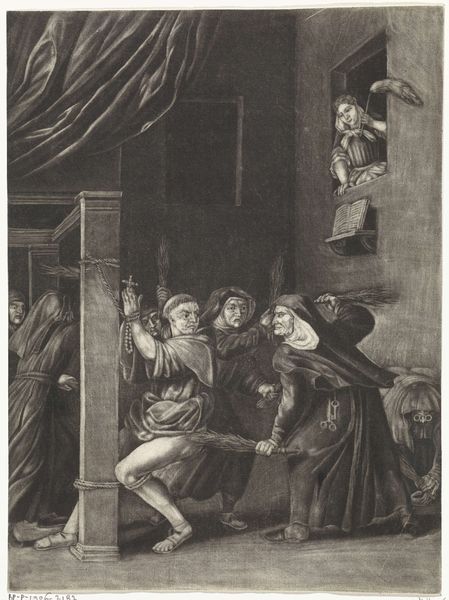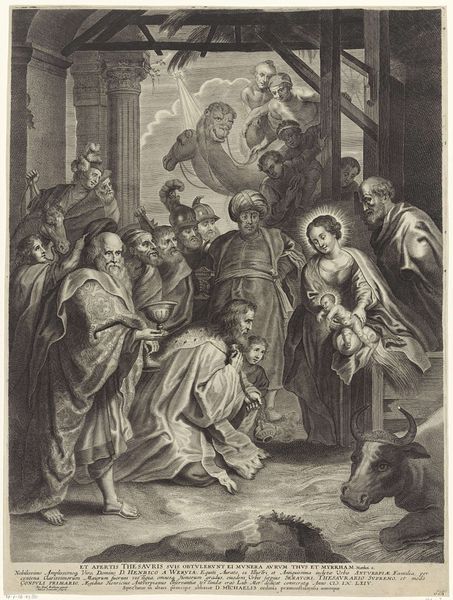
Christus voor Kajafas die zijn kleren verscheurt 1630 - 1654
0:00
0:00
marinusrobynvandergoes
Rijksmuseum
print, engraving
#
portrait
#
baroque
# print
#
charcoal drawing
#
portrait drawing
#
history-painting
#
engraving
Dimensions: height 388 mm, width 297 mm
Copyright: Rijks Museum: Open Domain
Curator: We're standing before "Christ Before Caiaphas Tearing His Clothes," an engraving attributed to Marinus Robyn van der Goes. It's dated sometime between 1630 and 1654 and resides here at the Rijksmuseum. What strikes you first? Editor: The stark contrast. It’s a chaotic composition, but the monochromatic rendering imbues it with a chilling and dramatic effect. The density of lines creates deep shadows and amplifies the sense of emotional turmoil. Curator: Indeed. Van der Goes employs a variety of techniques—hatching, cross-hatching, stippling—all serving to modulate light and shadow across the composition. This manipulation gives depth to the architectural setting, notice the carved ornament, and defines the figures, particularly the central group around Christ. Editor: Looking at the figures and the texture, the production of prints requires physical skill in mark-making. The choice of materials significantly impacts the emotional weight of the scene; it is a blend of religious zealotry with class structures implicit in its means of production and circulation. Curator: I understand the context you are bringing. The formal structure itself underscores the central drama. The perspective guides the eye directly to Caiaphas, the High Priest, as he tears his robes—a gesture signifying outrage at Christ's supposed blasphemy. It is framed through architectural cues, drawing parallels to classic period styles to enhance narrative potency. Editor: But consider what this suggests about labor. To create these textures—smooth skin, rough cloth—demands skill, time, and practice. Prints like this are reproduced. This labour connects the sacrilegious spectacle and the artist. Curator: The engraving presents us with complex thematic layers—justice, sacrifice, faith. What is your reading of it? Editor: The power dynamic, as it illustrates social inequity while reinforcing these power structures in an age where faith often determined who held privilege. I can't ignore the role of the process to how this piece means. Curator: It's a remarkable example of Baroque history-painting. A narrative captured through light, shadow, and line, skillfully manipulated to evoke a potent emotional and theological response. Editor: Thank you; I now recognize my own process and relationship with what faith represents within art-historical frames. It does open up dialogue surrounding materials to ask important questions concerning our perceptions.
Comments
No comments
Be the first to comment and join the conversation on the ultimate creative platform.
